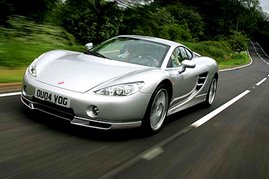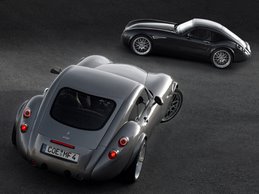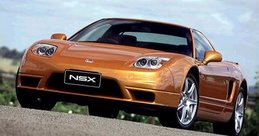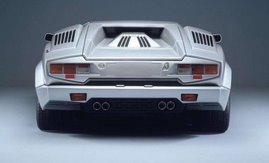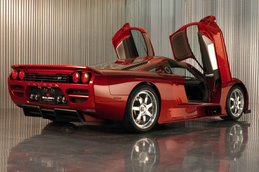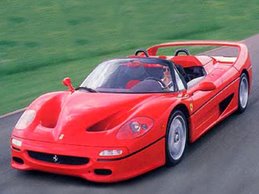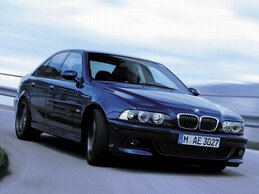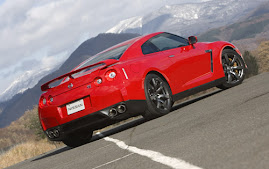
The ever-daunting question on the mind of any enthusiast: is there such thing as the perfect design? That special design that you consider just perfect, that design that you honestly think could not have been better?
Evidently, opinions on this matter are to greatly differ. Some enthusiasts think that there is no such thing as the “perfect” design; always implying that something can be “near perfect”, but not “perfect” per se. And on the same note, there are just as many enthusiasts who do indeed feel that there is such as the perfect design.
Now, obviously, us car-nuts are not going to find just one design that we’re all going to agree is perfect. That being said, finding the “perfect” one is of course all down to personal opinion and taste.
I found myself pondering over this question in my kitchen this morning, while eating my delicious left-over cold Hawaiian pizza (what else?). I thought to myself, “surely there must be at least one design that I consider “perfect”, and indeed there is. However, before I came to that solid conclusion, I did a little bit of a look-see into what some of my favourite automobiles were.
And with that on my mind, I was able to come up with a small list of my favourite cars that boast designs that I just happen to love for one reason or another. The first of many which came to mind was that of the Pagani Zonda. If you read my articles on a regular basis, you’ll by now know that I’m highly fond of the Pagani Zonda’s extroverted insaneness when it comes to its exterior. But then I thought, “No” - as much as I like the Zonda, I cannot say that it is the perfect design in my eyes.
But surely, there must be some other considerations from the great (and stylistic) country that Italy is. Well, to be honest, I’ve never been all that fond of the designs that come out the wine-grove. Of course, to say there are no designs from Italy that I appreciate would be trite. I mean, who could ignore such stylistic greats such as the Ferrari 257 GTB/4, Maserati Bora (a personal favourite of mine) and the Lamborghini Miura? But even though I have great deal of appreciation for those designs, I’m going to have to pass on the prospect of referring to any of them boasting a “perfect design”.
Shortly thereafter, I gave thought as to some of my favourite German metal and their many fantastic designs. The BMW Z8 immediately came to mind, as did Porsche’s 993 Turbo and their exclusive flagship, the Carrera GT. Though the three are of an entirely different design language, it must be noted that they’re all so equally fantastic. I had thought that the 993 Turbo with its quirky design and solid-brick metal made finding that perfect design all that bit easier, but then I thought that about the Carrera GT too...
And one cannot forgot such greats from Mercedes-Benz as the good ‘ol 560 SEC and in modern times, the 2008 CL-Coupe. Though, as great as they are, I don’t feel as if I have that whole “spiritual-connection” thing with either of two.
So then, over to the great isle of the United Kingdom and see what they’ve to offer. Well, there are the obvious candidates such as Jaguar and Aston Martin. These two manufacturers have been offering some of the most jaw-slackening metal over the last, oh, some 70+ years. With Jaguar on the map, there’s certainly no shortage of eye-candy; examples such as the XK120 SS, the E-Type and even the XJ220 are proof of this. Naturally, Aston Martin certainly doesn’t disappoint in this regard either. With early-day giants such as the DB4 and the DB5, you might wonder why one (particularly myself) should be looking elsewhere for that perfect design. And then advancing into a more modern era, you’ve got such vehicles as the V8 Virage, the Vantage 600, the DB7 GT and even modern greats such as the DB9 and the V8 Vantage. I must admit, the latter two in this long line of amazing cars, were of great consideration for my pick of the perfect design. These two luxurious GT’s are so perfectly designed from an exterior point of view that it’s hard to find any real faults.
I mean, quite honestly, can you think of anything on the design of either modern-era Aston that’s likely to offend?
Or, if crazy fits your tee, there are always specialist manufacturers such as TVR, Noble and the recently-closed Marcos. All three offer a look into a very different world of design philosophy, and they’re undoubtedly interesting, but are any of them perfect per se? No, I don’t believe so. The vast of them are just too fussy and convoluted to be considered a perfect design in my eyes.
That being said, I suppose it’s only fair for me to explain how I’m judging my criteria for such an honourable award. For me, the perfect design must be, well, perfect. Perfect in the sense that when I see one in the street, I get that good old car-nostalgia; you know; that feeling that you had when you found your first “car love”? A feeling that makes you say think to yourself: “it’s perfect”; “it’s timeless”; “its classic”; “they couldn’t have done it any better”.
And being naturally biased towards Japanese automobiles, I thought I’d take a look over into the country of the Rising Sun and see what lies-in-wait. Toyota being my natural preference when it comes to Japanese autos, I assumed that would be the place to find that perfect design I ever-so seek.
Naturally, the first of many impressive designs that came to mind was that of the Toyota 2000GT. I love this car with a great passion and quite frankly, think it looks just as, if not better than many Italian supercars. With its small proportions and sleek body, Its design is nothing short of lustful. In other words, a worthy contender, you might say.
Meanwhile, more recent designs such as the Celica of 1985 and the Lexus SC400 of 1991, are also very influential and do well to get my motor-inspired heart running at high speeds. But still, I feel there’s something missing; that degree of allure I’m looking for seems to be non-existent in either of those designs.
Nissan has offered a-many interesting designs since it’s founding, but nothing that I deeply desire to be honest.
So, that can only leave one car company left – Honda and affiliated. I must admit – that by and large - to regarding Toyota higher than Honda, but when it comes to designs, I find myself less annoyed with Honda’s themes. Thus my point being, I not only find Honda designs to be a tad more interesting, but also less fussy and ultimately, better looking than Toyota’s.
The NSX is one of those cars, which in my eyes, is just simply amazing. It’s one of those cars that I never tire of – seeing one on the road always induces the same jaw-slackening response from my face. And as much love as I have for the NSX, I’m going to have to pass on the prospect of naming it the perfect design.
But then one particular car came to mind… It’s a car that I must admit to being highly biased towards because my father owned one a couple of years back. And I’m not going to lie, it’s a choice which will surely shock enthusiasts world wide.
Hints: It’s from Honda; it’s small; it’s RWD; it has a four-cylinder engine and it’s a roadster. If you’re familiar with Honda’s history, you know that these characteristics reduce the overall tally to just a few choices: the S500, the S600, the S800 and the S2000.
And the winner is?
Honda S2000:
First generation (Year: 2000-01)

Now, I haven’t any doubt that enthusiasts reading this are going to be wondering what drugs I’m on and how I could possibly place this understated roadster from Honda (of all companies) as my perfect design; even after I’ve ignored such vehicles from Porsche, Aston Martin and Ferrari.
Though, I can’t say I’d blame anyone for wanting a bit of explanation as to my rather surprisingly (and oddball) choice. I specifically remember the day when my father went to dealer to test drive his then later S2000, and as the car had just two seats – I had to be left behind while my father and the dealer took it out for a spin. Disappointing? Surely, but as the car pulled away from the dealer, I had some sort of an automotive epiphany which made me see the S2000 in a different light.
Oddly enough, I had this same epiphany a few months later: as the sun began to set on a warm and vibrant day, the glow of the halogen bulbs and the Silverstone Metallic paint gave off a strange aura. An aura I can only describe as seeing the vehicle as some sort of design perfection. I looked at it and not only thought, “my dear, could they have done that thing any better?”, but I also remember thinking, “I can’t believe that thing isn’t worth twice what its MSRP is”. Dramatic you say? Well, surely it is, but hey – it works for me. It’s still something that I happen to believe to this day. Whereas others might see the S2000 as some low-grade roadster with an understated (perhaps even boring) design, the vehicle in my mind looks to be quite high-class. It’s not a forceful design by any means, but it’s very well conceived; its proportions are all very well thought out with nothing looking too “out there”. As a result, I also happen to feel to the S2000 is quite timeless. Despite the fact that it’s been on the market for nearly eight years now, I don’t think it has managed to date even the least bit; it still looks every bit as fresh today as it did when it was first released.
And as I mentioned above, its proportions are just sublime. Take a look at the front fender, for instance – it’s hard edged, thus keeping the design blocky and compact at the front, whilst managing to give the car a style-theme that gives the nose the classic appearance expected from any front-engine sports car. The under-grill arrangement, albeit simple, looks to be simply awesome. All of which makes for a very clean component of the design, which naturally matches perfectly in-line with the vehicle’s headlamps.
The side profile is really no less impressive with its interesting mix of classic sports car cues, which yet at the same time, manage to be undeniably Japanese. The front end is just right, the windscreen height it set perfectly in cue with the bonnet and the rear is classically short, without being too short. Even the mirrors fixed on the body rather than connected to the windscreen A-pillar, do well to illustrate that the S2000 is indeed a sports car.

And speaking of the rear-end, I cannot for the life of me think of anything that I do not like about it. The exhausts, the diffuser, the light-bar and the tail-lamps are all so perfectly laid out; the latter of which especially with it’s multi-coloured arrangement of lighting. Even the way in which the white coloured lamps divide between the reverse lamp and the signal lamp (orange signal on top, white reverse on the bottom) of the circle is too –oh, how should we say it? – awesome (again). The roll-bars are also well thought out as they are not only functional (as they bloody well should be), but happen to look just right; not only are they not tacky, but they’re – unlike the vast of roadsters - not too big either.

When Honda gave the S2000 a relatively small facelift in 2004, I must admit that I had felt perfection had been needlessly toyed with. Certainly, I understand the need to boost the sales of the already exclusive vehicle, but I couldn’t help but feel that what was added was just knick-knack. Don’t get me wrong, the facelift produces what is still a great looking car, but the original seemed so much more authentic.
When Van Gogh painted his all-famous “The Sunflowers”, did he know what he was onto? After all, he painted so many iterations of this fantastic painting, one has to wonder. His first - painted in 1888 – with its vibrant 12 flowers is undoubtedly his finest, but in the following years Van Gogh completed six more versions. But none of them had the impact of the original. And the same can be said for the Honda S2000. I believe Honda struck perfection when they designed the first generation S2000, and I believe they’ll never top it.



